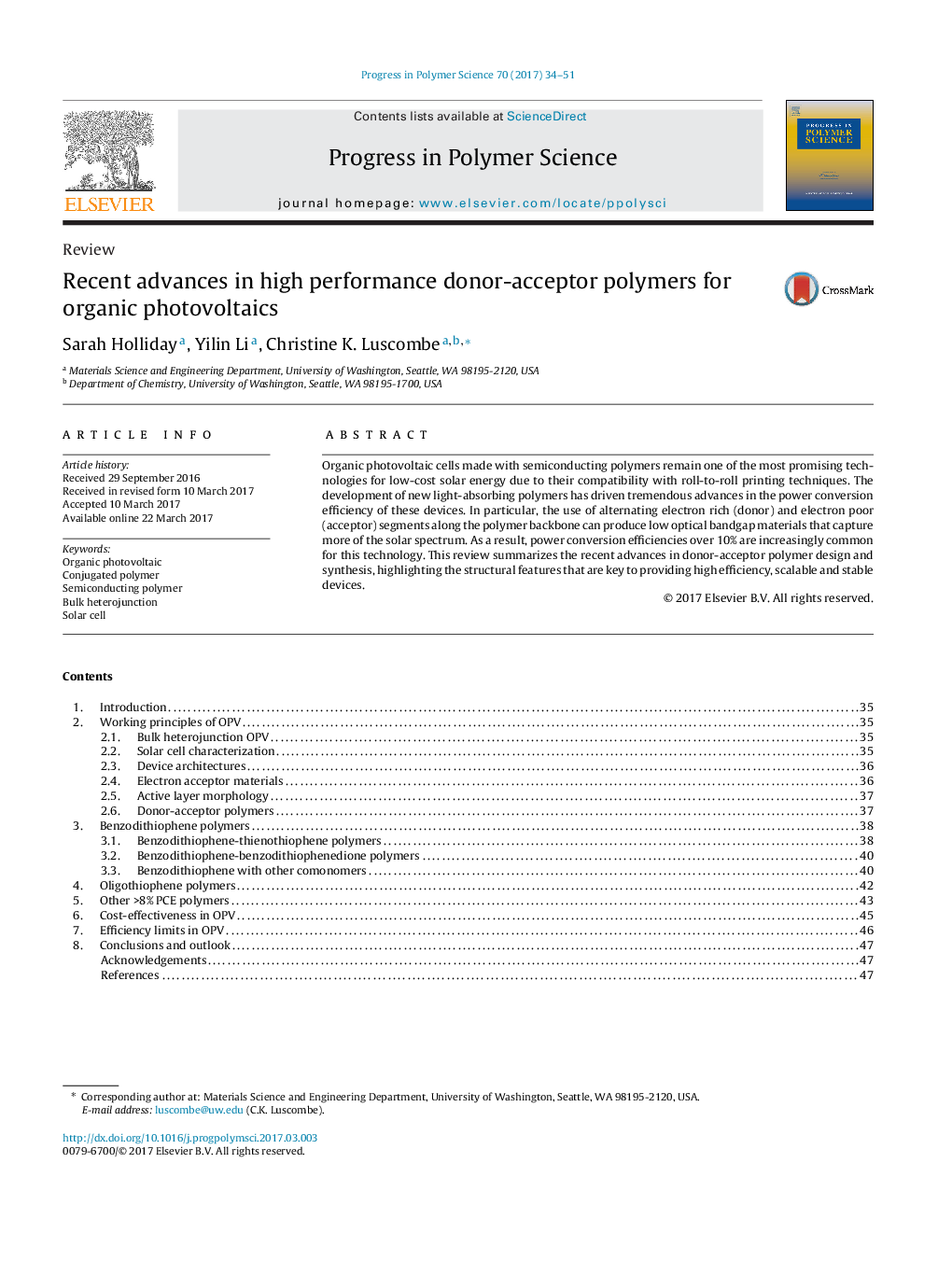| Article ID | Journal | Published Year | Pages | File Type |
|---|---|---|---|---|
| 5207866 | Progress in Polymer Science | 2017 | 18 Pages |
Abstract
Organic photovoltaic cells made with semiconducting polymers remain one of the most promising technologies for low-cost solar energy due to their compatibility with roll-to-roll printing techniques. The development of new light-absorbing polymers has driven tremendous advances in the power conversion efficiency of these devices. In particular, the use of alternating electron rich (donor) and electron poor (acceptor) segments along the polymer backbone can produce low optical bandgap materials that capture more of the solar spectrum. As a result, power conversion efficiencies over 10% are increasingly common for this technology. This review summarizes the recent advances in donor-acceptor polymer design and synthesis, highlighting the structural features that are key to providing high efficiency, scalable and stable devices.
Related Topics
Physical Sciences and Engineering
Chemistry
Organic Chemistry
Authors
Sarah Holliday, Yilin Li, Christine K. Luscombe,
